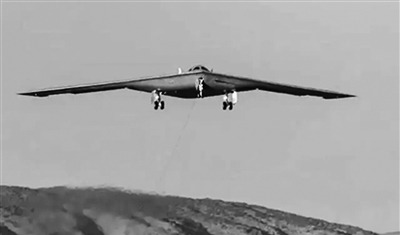
First test flight of the US B-21 Raider.
Russia announced that it had completed all procedures for withdrawing from the Treaty on Conventional Armed Forces in Europe (CFE) on November 7, and NATO also declared an official halt in fulfilling relevant contractual commitments on the same day.
In recent years, due to declining strategic mutual trust, the US and Russia, two nuclear powers possessing more than 90% of the global nuclear weapons, frequently withdrew from the Treaty, posing grave threats to the sustainability of their mutual supervision and transparency mechanism in the nuclear arms control and further severely impacting the international nuclear arms control system. Meanwhile, with the old nuclear arms control mechanism already shattered and the new one not yet in place, the two sides are still accelerating the upgrading of nuclear forces. Not only that, the US works with its allies to actively expand or upgrade extended deterrence. For example, it carried out nuclear submarine cooperation with the UK and Australia, acquiesced in Japan's stockpile of massive nuclear weapon materials and gradually relieved the restrictions on ROK's missile development.
The proliferation and use of nuclear weapons, capable of extinguishing human civilization, have been consistently under the world's scrutiny. And the increasingly prominent conventional arms control issues also pose serious challenges to global security and development. At present, frequent regional conflicts and violence have provided a hotbed for the illicit conventional weapon trades, of which the discovery and traceability of light and small conventional weapons are particularly challenging. The application of cluster munitions, white phosphorus bombs, depleted uranium bombs and other specific conventional weapons has not only exacerbated the intensity of conflicts in relevant countries and regions, but also triggered serious humanitarian crises. Moreover, some countries' irresponsible export and management of common or special conventional weapons have also aggravated the contradictions and conflicts. What's particularly worrisome is that the military assistance provided to Ukraine by the US government startlingly incorporated weapons like cluster munitions and depleted uranium bombs.
In tandem with the increasingly emerging conventional arms control problems, arms control in the advanced technology domain is an even more arduous and lengthy task. The development of technologies in outer space, cyberspace, artificial intelligence (AI) and other fields has caused ongoing repercussions on the existing global strategic stability, international law and ethical and moral norms, and brought new problems and challenges to global security. Although relevant dialogue mechanisms and initiatives have been implemented in the international community, there is still a considerable distance to cover before reaching operational international conventions.
For outer space, the UN had adopted the Outer Space Treaty to ensure the peaceful use of this domain early in 1966, but failed to employ it to substantially restraint the militarization of outer space due to absence of clear boundaries and difficulties in verification on peaceful purposes. In recent years, the role of outer space in strategic early warning, command and control of nuclear weapons, communications, and other aspects has become increasingly highlighted. Certain countries oppose the initiative of non-weaponization of outer space to maintain their dominant position in outer space, thus impeding the international society from achieving universally enforceable outer space arms control rules.
In cyberspace, cyber attacks and surveillance initiated by both state and non-state actors occur frequently. Incidents such as the "Stuxnet" virus attack and the "PRISM" reflect the strong military applicability of cyber, further escalating the cyberspace arms race and conflict risks. Due to the serious imbalance in the cyberspace resource allocation, as well as the significant differences in the concepts of cyberspace order and domestic cyber security governance models among countries, the paces of facilitating the international code of conduct in cyberspace and bilateral and multilateral cyber arms control arrangements are still remarkably sluggish.
In addition, the rapid development of AI impacts the existing international arms control system. On the one hand, AI command and control systems will dramatically reduce the time for human decision-making in relevant matters. It is worth noting that whether it is the potential errors and vulnerabilities within AI systems, or the heightened psychological pressure on individuals due to accelerated decision-making processes, both will amplify the risks of misjudgment or escalation of relevant crises. On the other hand, AI-empowered weapons could possibly operate outside human control and against the armed conflict and international humanitarian laws. However, there are considerable divergences among the international society regarding what aspects should be governed and the appropriate methods of regulation in the international arms control of AI.
Peace and stability are the common pursuit of worldwide citizens. All countries should abandon the mindset of confrontation and zero-sum game, fulfill the relevant international obligations and commitments, and take concrete actions to maintain the international arms control system and contribute to world peace.
(The author is from China Institute of International Relations)

Russian Burevestnik ("Storm Petrel") nuclear-powered cruise missile













